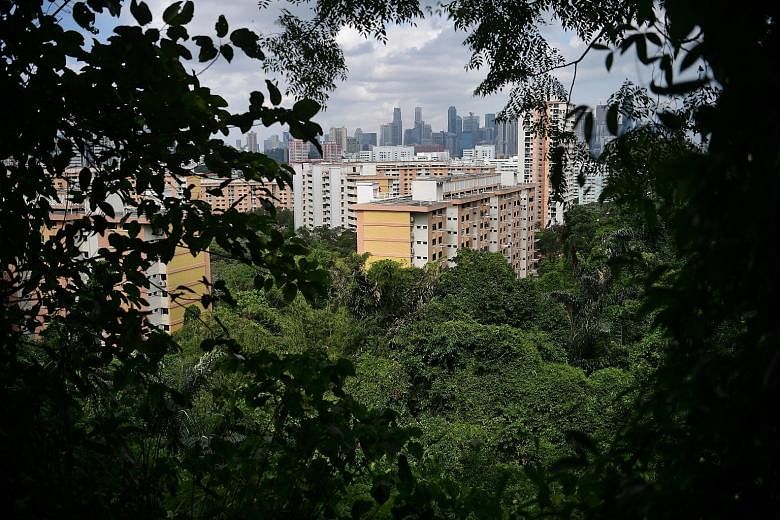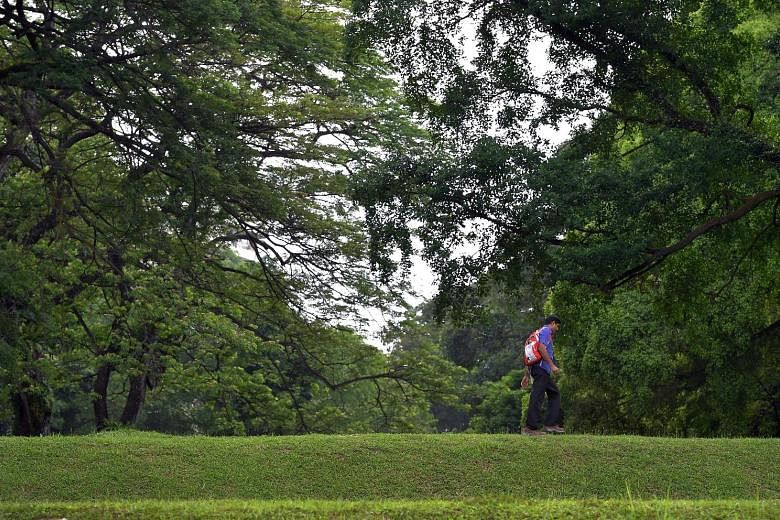When it comes to urban tree density, Singapore stands at the crown.
The City in a Garden outshone 16 cities from all around the world, in a study by researchers from the Massachusetts Institute of Technology (MIT) and the World Economic Forum (WEF). Almost 30 per cent of the Republic's urban areas are covered by greenery.
This puts Singapore ahead of Sydney, Australia, and Vancouver, Canada, both of which are tied for second place with 25.9 per cent.
Sacramento, in California in the United States, follows closely behind with 23.6 per cent.
Of the 17 cities, Paris has the smallest percentage of green urban areas at 8.8 per cent.
More cities will gradually be added to the database, the researchers said last December, when the list of cities was first uploaded on a website known as Treepedia. It was again highlighted by news site Business Insider earlier this week .
Researchers use data from Google Street View to measure trees and vegetation in cities around the world to form the Green View Index (GVI), presented on a scale of 0 to 100. It shows the percentage of canopy cover for a particular location.
The researchers determine this by getting Google Street View images in each city, then extracting green areas using computer vision techniques. The data is processed to obtain the GVI.
As Google Street View shows panoramic photographs of streets and buildings, it allows the study to capture data such as vertical gardens. But as the images are taken by cameras atop cars, only areas with roads are covered in the study, said Mr So Wonyoung, a data visualisation specialist from Singapore-MIT Alliance for Research and Technology who is involved in the project.
Professor Carlo Ratti, director of the MIT Senseable City Lab and head of the project, said the goal of Treepedia is to get people to take action to improve urban tree cover in their cities.
"We present here an index by which to compare cities against one another, encouraging local authorities and communities to take action to protect and promote the green canopy cover," he added.
Plant scientist Lahiru Wijedasa, who is pursuing a doctorate at the National University of Singapore, said the study shows the success of the nation's long-term planning.
Indeed, the amount of skyrise greenery in the Republic, which includes gardens on roofs and building facades, is a good indicator.
This has grown from 61ha in 2013 to 72ha in 2015, which far exceeded the target of 50ha the Government had hoped to hit by 2030. The most recent figures from the authorities show 100ha. The new target is now 200ha of building greenery by the same deadline.
Other than providing shade, urban greenery can also improve air quality and promote well-being, said arborist Goh Mia Choon from CSK Landscape Services.
Mr Oh Cheow Sheng, Group Director, Streetscape, National Parks Board, said: "Our roadside greenery forms the backbone of our City in a Garden. NParks manages about 2 million trees along our streets, in parks and statelands. Trees are selected based on their suitability for various habitats, growth habit, place of origin, tree form and function, aesthetics/landscape value, ease of maintenance, and hardiness, such as drought tolerance."
"Our roadside trees are an integral part of the pervasive greenery that makes Singapore distinctive and together with our parks, gardens and nature reserves, provide diverse opportunities to appreciate nature up close. This is key to our vision of a City in a Garden which is biophilic as it creates an environment that improves the overall physiological and psychological well-being of all Singaporeans," said Mr Oh.
But Mr Lahiru said climate change poses a new threat for roadside trees in Singapore, which already grapple with stressors such as having to share space with electrical cables and drainage systems.
"I have concerns about whether our greenery as it is today can survive. We have seen healthy trees die standing up during droughts in recent years," he noted.
The answer to this could lie in greater research on developing more resilient roadside trees and developing better soil conditions.
The Nanyang Technological University and National Parks Board (NParks) have jointly developed a substance that, when sprayed on soil, will release water molecules during scarce rainfall, helping tide the plants over dry periods.
• For more on Treepedia, see http://senseable.mit.edu/treepedia.



